Interview with artist Bryan Massey, Sr.
Bryan Massey, Sr. is originally from Goldsboro, North Carolina. He was recruited to the Department of Art and Design at the University of Arkansas, Conway in 1988 and rose through the ranks to become professor and department chair in 2018. While Bryan considers himself primarily a stone carver, he has also created some iconic steel sculptures on display throughout the state and the South. He is recognized nationally and internationally as a figurative and abstract carver and sculptor and received the Governor’s Artist of the Year Award in 2006. Bryan is represented by Hearne Fine Art in Little Rock, Arkansas.
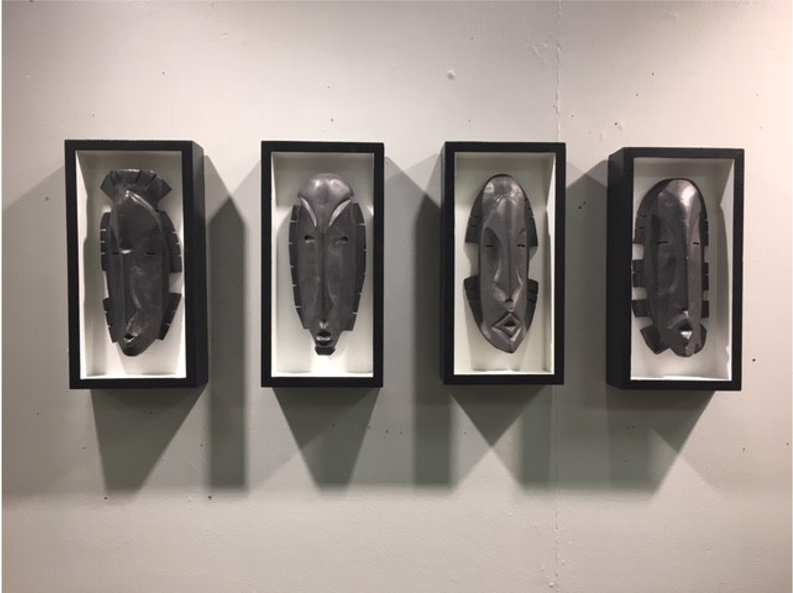
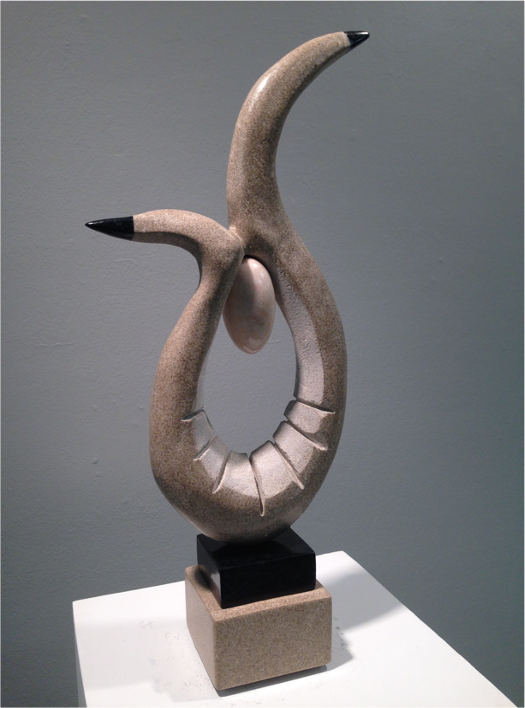
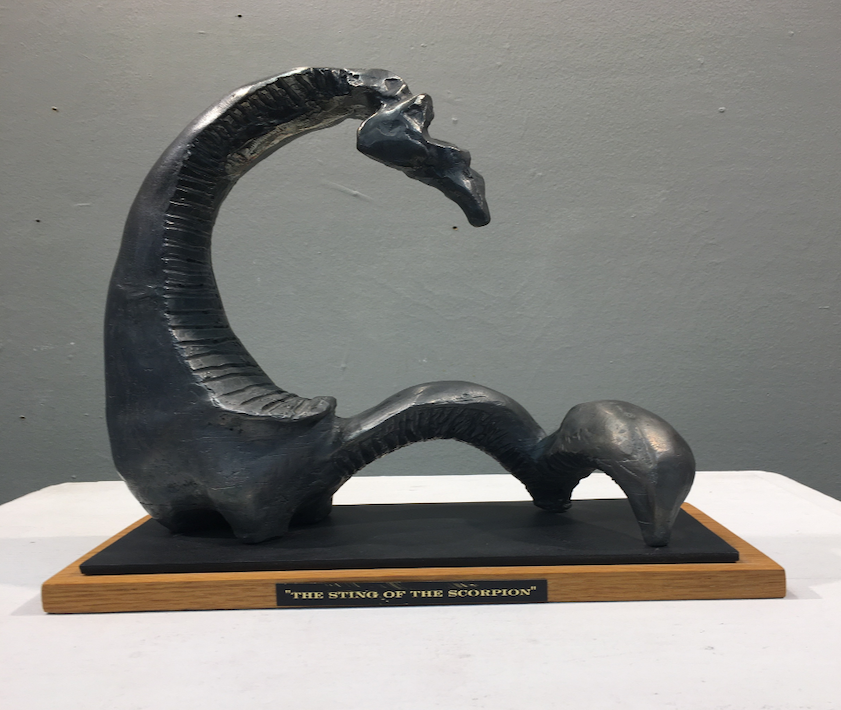
AAS: Bryan, have you always wanted to be a sculptor?
BM: No, I had aspirations to play football in college and the NFL. Once I realized that I was not going to take that path, I focused on art and I wanted to become an illustrator for The Hallmark Company doing Greeting Cards, etc. I was always drawing as far back as I can remember. I was a fan of the Incredible Hulk show starring Bill Bixby and Lou Ferrigno, so I wanted to draw and paint an image of the Incredible Hulk on my bedroom wall. My mom said I could, but I also had to draw and paint an image the same size as the Incredible Hulk, an image of Jesus Christ. So, I had the Hulk on one wall and Christ on the other.
I got into sculpture by accident, well what I call by accident, but I feel that there was a Divine Intervention that took place that day for me. I was in summer school at East Carolina University and while walking along the wall of the School of Art, I heard a commotion over the wall, so when I got to the opening, I peeked and saw this small stature man and a group of students struggling with this block of stone that was teetering on the back of this old flatbed truck. I asked them if they needed help. They said yes of course, so I put my shoulder under the stone and lifted and nudged it back onto the flatbed truck. The cable for lifting the stone had snapped and it was on the verge of falling off the truck and being damaged. The instructor (Professor Robert Edmiston, now deceased) said that they could use strong art students in the sculpture program and asked me if I would take his Sculpture Survey course. I said sure, well as they say, the rest is history. I had found my artistic calling.
I did not get to LSU until two years after I left ECU. My sculpture professor Norman Keller contacted me late January 1985 to see if I could travel with him to pick up several works of art from various universities. We ended up traveling to Florida State, University of Georgia, LSU Baton Rouge, and Louisiana Tech in Ruston. I did not know, but he was slyly trying to see which of these schools I may be interested in for graduate school. I had no intention of going to grad school. I was a newlywed and working full time for the State of North Carolina. I eventually did apply to grad schools. LSU-Baton Rouge, Florida State, the University of Georgia, and Louisiana Tech all wanted me, but I selected LSU and it was the best decision I ever made, not knowing how it was going to affect my future as a sculptor.
“I like the fact that I have the skill set to draw my concepts, reproduce it in clay form, enlarge the sculpture, make the molds for reproduction, cast the wax, cast it in metal, do the finishing work and install the sculpture when it is completed. That’s what I mean by telling the whole story.”
AAS: You have been at the University of Central Arkansas for over 30 years and are the Chair of the Department of Art and Design. How did you end up at UCA and was your goal in college to eventually teach at the university level?
BM: Like every other grad student about to graduate, I was looking for employment. Unlike today with all the social media avenues available, that did not exist in my world in 1988. So, I put together what financial resources I had and had 1500 brochures printed up with my resume, images of my work, teaching philosophy, etc. in it and “snail mailed” them out to any gallery and school I could think of to see if I could get any bites. I saw the University of Central Arkansas’ advertisement in the LSU College Arts Association letter and applied. I was invited for an interview in April, 1988 and before I landed back in Baton Rouge, Dr. Kenneth E. Burchett had called my wife to tell her to tell me thank you for a positive interview and that they would be in touch. Two weeks later, before the ink was dry on my diploma, UCA called and made me an offer and so, here I am.
I never in my wildest imagination thought about teaching in any aspects. Remember my sculpture professor Norman Keller? Well one weekend, I had “sneaked” some children of color from the not so pleasant side of town in Greenville onto campus to do a small workshop in art. I did not realize that Professor Keller was on campus and had seen me do this. I was called into his office that Monday and he said, “I saw what you did on Saturday, have you given some thought to teaching?” I totally thought I was in serious trouble, but I told him no. I just wanted to graduate, get my “Union Card” (diploma) and get a good job. So, you see, it never was my intention to teach at the university level. Now look at me, going on 34 years at UCA and I am the first African American Chair in the history of the Department of Art and Design as well as the first African American hired in the Department of Art at that time and the only African American Stone Carver in the State of Arkansas.
AAS: What is it about sculpture and sculpting in extremely hard materials that excites you?
Bryan at work sculpting at the Little Rock Sculpture Garden.
BM: Man... The challenge of it all. Seeing the transformation of a block of stone (not rocks) come to life - cutting and bending metal to your will - the glow and the flow of bronze, aluminum and iron being poured into investment castings or ceramic molds - the intense labor involved in reproducing something that no one has ever seen or experienced. To be able as an artist to tell the “whole story” from conception to completion, all of that is what excites me.
AAS: You have created so many iconic sculptures and I want to talk about some, but you have also earned many honors and awards. You are the 2021 Charles Hook Award Recipient and have a solo exhibition at the National Conference on Contemporary Cast Iron Art and Practices. It must be very gratifying to be recognized in this way by your peers.
Adam and Eve, cast iron, alabaster, wood, 20” x 5” x 3”
BM: That was seriously and completely surprising to me to have that award bestowed upon me. Professor Charles Hooks (remember Florida State), now deceased, was one of the professors I met on my tour of there. I eventually met his wife, Deborah, who cast Iron with Charlie as he preferred to be called, so the award is named after him and it brought me to tears that my peers thought enough of my contribution to the Art of Cast Iron Art to select me for that award. Adam and Eve was the first cast iron sculpture I did while casting iron over in the UK. That year I was one of eight American sculptors selected from the United States to participate in this International Cast Iron Workshop/Conference. Since using Styrofoam as a medium in casting iron was unlawful in the UK because of the toxicity of the fumes produced, I was allowed to cast my Adam and Eve using the Styrofoam burn out casting procedure because I was an American guest artist, and I was demonstrating the practice to “disseminate knowledge” even though it was an unlawful practice in the UK.
Funny thing though, Adam and Eve nearly got me arrested upon my return to the United States as I was going through Customs at the LaGuardia Airport in New York. On the x-ray machine they looked very similar to missiles and I had to unpack them for verification.
AAS: Would you talk about your love of music and your piece Tribute to Stradivarius, now installed at the GRAMMY Museum in Cleveland, Mississippi?
BM: Music has played a vital role throughout my career. There is something about hearing The Temptations, Luther Vandross or Aretha Franklin playing in the background that gets my creative juices flowing! Although I do not play any instruments, I love to hear a master play the violin or hear someone making the alto or tenor saxophone sing, two of my favorite instruments that are reflected in my work from time to time. Stradivarius is considered the Mercedes of the music industry, and what better way to pay tribute to that instrument than at the GRAMMY Museum in Cleveland, Mississippi. As my faculty and students can attest, I still play music in the studio. One time during one of our visits for our National Accreditation, the team visiting stopped by my studio during one of my classes and I was playing some soft jazz in the background. Students were working on projects and everyone on the Accreditation Team commented to me about the “wonderful creative atmosphere” in the studio.
Tribute to Stradivarius, steel and bronze, 14’ x 5’ x 3’
Tribute to Stradivarius (side view)
AAS: Then there is your monumental work, Otis, hanging off the side of Donaghey Hall at UCA.
Otis, stainless steel (fabricated), 8’ x 4’ x 16’
BM: Growing up in the sixties, we only had three, yes three television channels to watch. The Andy Griffith Show was one of my favorite shows and the town drunk, Otis (Hal Smith) besides Barney Fife and Curtis T-Bass was my favorite character. I was approached by a committee and an architectural firm to create something unique to UCA for the new building after they had completed a national sculptor search. I did a storyboard of several concept drawings and once they selected the best one, I constructed a maquette of a portion of the new building with my bear on it. Otis is constructed out of stainless steel with the angular pattern that the selection committee preferred, rather than a realistic bear. I named it Otis because only a bear that is drunk would climb the side of a building and then look back over its shoulder wondering “How in the heck did I get up here?”.
AAS: You have created some other large and powerful sculptures like Nautilus, S.E.A.L., WindSong 1 and The Cyclone. Would you talk about those?
Nautilus, Indiana limestone and steel base, 9’ x 5’ x 2’
BM: Nautilus, located in the Sculpture Garden in Little Rock Directly behind The Marriott Hotel, is carved from a, 8,200 lb block of Indiana Limestone that was shipped via flatbed 18-Wheeler. The interesting story behind Nautilus is that I had planned out just how I was going to lift it off the flatbed upon its arrival. I specifically built a 10 Gantry Crane with a 3-ton capacity because the original stone I had ordered was for 6,000 lb. The quarry contacted me and asked me if I would take the 8,200 lb. block without any additional costs. Of course, I said yes, not realizing how difficult it was going to be to unload it. At any rate, the truck arrived, and the Gantry Crane and hoist did not have enough clearance of the flatbed to lift the stone and the forklift on the flatbed had a capacity of only 5,000 lb, so we could not lift it with the forklift. By the way, we ended up bending one of the casters (wheels) on the Gantry Crane. One of my students got the brilliant idea to use a second forklift from the other side of the truck, allow the truck to drive from under the stone, and put it on the 10,000 lb steel dolly that I had constructed just for the stone. It was a good thing I made it to support 10,000 lb rather than the 8,000 lb of my original idea. It worked and we were able to pull the dolly with one of the forklifts into the sculpture courtyard and once in the courtyard, the asphalt gave way, and the steel dolly wheels sank into asphalt and that is where it stayed until I could drill and cut out the form I needed for Nautilus. It took me 12 months to carve Nautilus.
S.E.A.L., steel and limestone, 15’ x 5’ x 5’
S.E.A.L. is located at the Headquarters of ARC BEST in Fort Smith in the main lobby of that corporation. WindSong I is located on the RiverWalk in Fort Smith along the Arkansas River. Both of these sculptures were fabricated in steel. S.E.A.L. has a large 600 lb limestone sphere on top and WindSong I has a professionally manufactured wind chime attached to it. The first wind chime was stolen from the sculpture after the flooding of the Arkansas River. Both Nautilus and WindSong I were under water when the Arkansas River flooded 2019.
The Cyclone is installed in front of the Russellville Center for the Arts on the Arkansas Tech Campus. I took me 14 months to fabricate as well as finding a company that had an oven or kiln big enough to powder coat the entire sculpture at once. I found a company in Morrilton and the capacity of their oven/kiln was just a little over 10' wide. They had about 3" clearance on both sides for the width to fit – tight but it worked.
WindSong 1, steel and windchime, 8’ x 5’ x 2’
The Cyclone, steel, 15’ x 10’ x 10’
AAS: How do you decide on the medium for a particular work?
BM: Whenever I select a particular medium, I already know some of the history of the medium and how it will react to being treated in a particular way. Whenever I have a concept in mind, I already see it “Gallery Ready” – the base, pedestal, lighting and composition. I just work in the reverse to make it happen. Sometimes it is all stone or a combination of stones, all steel, iron, bronze, aluminum or a combination of metal and stone. Each one has its own characteristics and therefore, the challenge will be different for each concept. Again, it goes back to me as a sculptor wanting to tell the whole story. Some sculptors come up with the concept but may send it to a foundry to have it reproduced in clay, enlarge it, make the molds for reproduction, wax work (sculptor signs name in wax), cast it, and upon installation, the sculptor shows up and gets all of the credit. There is nothing wrong with that, but I like the fact that I have the skill set to draw my concepts, reproduce it in clay form, enlarge the sculpture, make the molds for reproduction, cast the wax, cast it in metal and do the finishing work and install the sculpture when it is completed. That’s what I mean by telling the whole story.
Queen of the Nile, alabaster, limestone, soapstone, epoxy, 36” x 12” x 10”
AAS: You have created some stunning carved stone figures - busts, I guess I would call them – such as Queen of the Nile, The African Prince, and Set Us Free. Would you talk about those pieces and how cultural and social issues influences or inspires your work?
BM: I cannot deny my heritage and not create works of art that reflect the struggle, the journey, the royal lineage of my people who were brought from their homeland to a foreign soil as slaves. Just imagine being of royal blood and now being a slave. That is what this series of work represents and during my visit to Gorey Island in West Africa, this became more to me than words of limited exposure in the American History books.
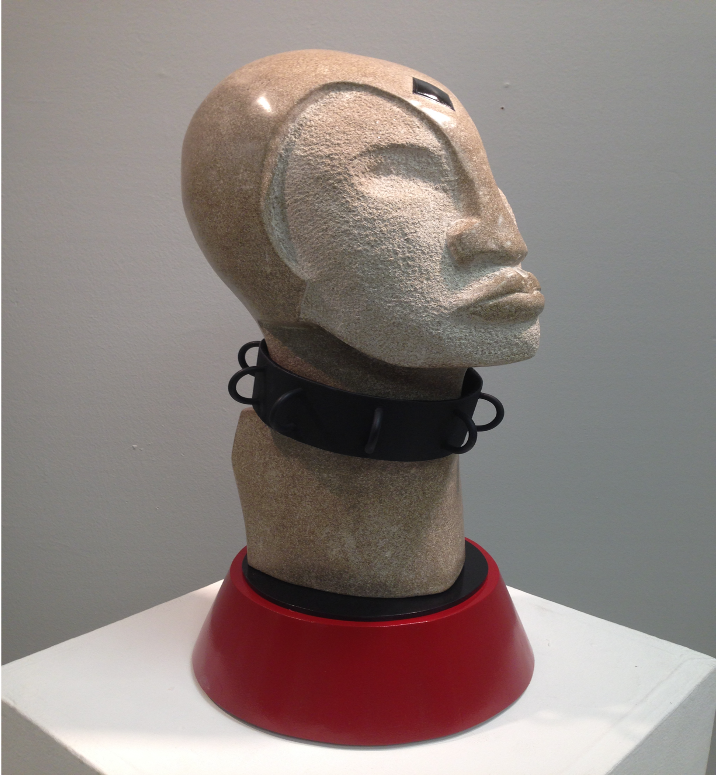
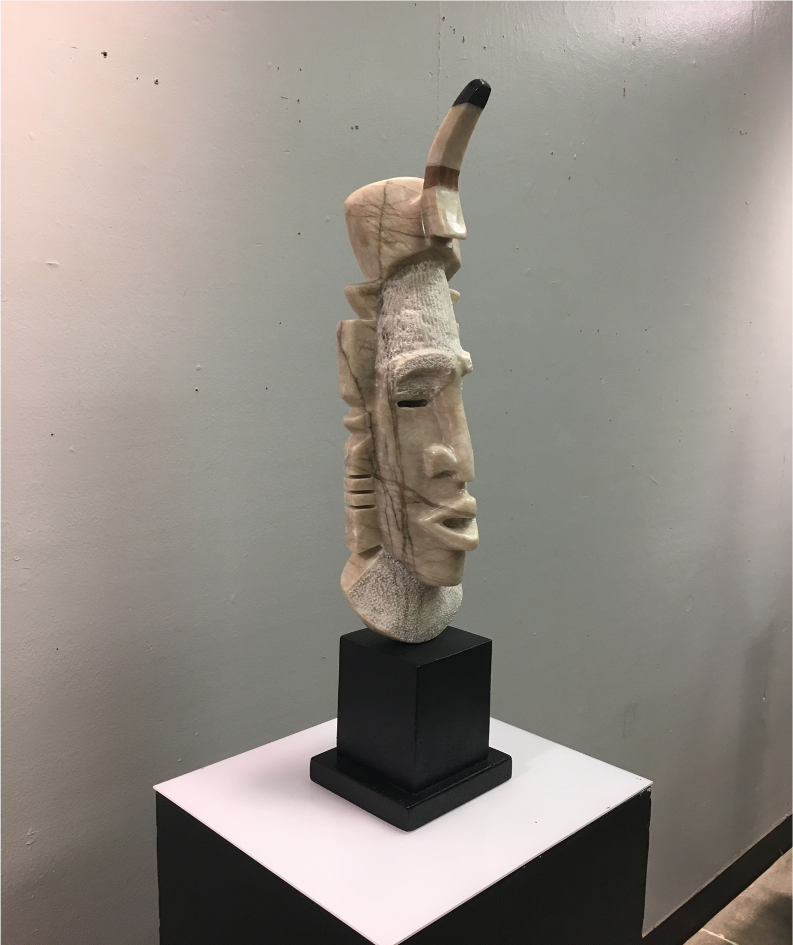
AAS: You have said that your faith and African American heritage are important influences in your art. I find Iron Sista to be a very spiritual piece. Would you talk about that piece?
Iron Sista, cast iron, 12” x 2” x 2”
BM: For me, growing up and having many strong African American Women in my life from my grandmothers, my aunties, community of African American single mothers as well as my own mother, Iron Sista reflects the strength and endurance of these women, facing the everyday challenges they did and continue to do so. For me, iron best represents that strength. Some of my pieces are forged, many are casts. Casting iron is a whole different mindset than casting bronze. It is two different worlds, and the experiences are different.
AAS: Bryan, with your busy schedule and responsibilities at UCA, how do you find the time to sculpt, an art form that is so labor and time intensive?
BM: I knew that going into the administrative side of academia was going to be challenging for me to find time to work in the studio. It has reduced my time in the studio, but not my enthusiasm to be in the studio. I usually set time on Fridays and Saturdays for studio time, but many times after 4:30 pm rolls around, you will find me in the studio working from that time until about midnight before I go home to get a shower and some sleep. Believe me, after an intense time of carving or cutting and fabricating metal or working on wax patterns for casting, I sleep very well.
AAS: Where do you see art education in the next 10 years? Do you think there will be any shifts in content? Will students be asking for or require different skills?
BM: In Art Education, I do not foresee a great change in the next 10 years as far as studio practices are concerned, . If anything, I see students wanting to learn the skill set of stone carving, cast metal or fabricated art because it gives you something that you cannot capture on a keyboard (computers). There may be shifts in the content, but not the practice of being an artist. I am pretty sure that I will not be involved with UCA in ten years (retirement), but I will never retire from the creative side of art.
Many fine art students have asked me what I did to become a successful artist, how to make that happen for them, and is it necessary to go on to graduate school. They worry that they may not have the skill set to go to graduate school, but I always tell them that graduate school is not for everybody. But if you want to further your education and improve your skill set, grad school would be the place to do it. If you want to teach at the university level, most universities require a terminal degree (MFA, PhD or EdD) for the arts.
AAS: Considering your successful career in education and notoriety as an artist, you must be sought after for advice. What do you say to artists trying to make it in this field?
BM: Most students (and their parents) want to know “Can I get gainful employment with my art degree?” My answer to both the student and parent is a resounding yes! Many students ask me how to be successful in art. I tell them to keep making and creating, improving your skill set and if you have the drive and the passion for what you do, it won’t be long before you will be turning down or picking and choosing what you want to as an artist. I especially drive this point with artists of color since we are far and few in the state of Arkansas and the Nation for that matter. I had to work three times as hard to get what I wanted and if it meant being homeless, living out of my car to make my dreams come true, then so be it. Everyone’s path is and will be different.


